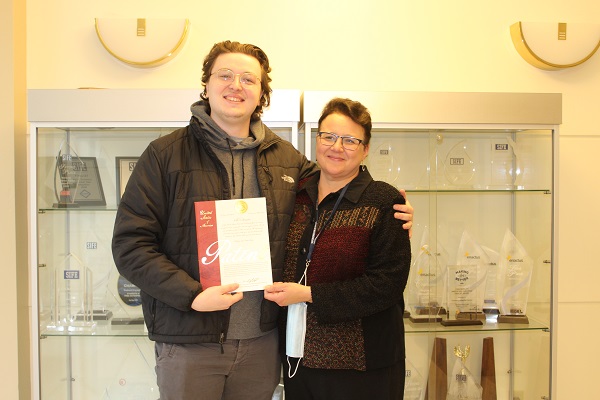Hackettstown’s Centenary University Receives Its First Patent for Wearable Device for Truckers
Centenary University’s competitive business team didn’t hesitate when colleges were challenged in 2016 to find an answer to safety problems in the workplace.
In a couple of months, the team had its issue and an answer — a prototype wristwatch that alerted fatigued truckers and motorists when they were driving drowsy.
The team also learned that it needed a patent, but that would take time to develop. So, after much time and tinkering, they almost called it quits a year ago.
But the university, founded in 1867 and located in Hackettstown, finally secured its patent in April, five years after starting the process, according to Linda Poisseroux, assistant professor of business and director of Enactus, the competitive business team.
It was the university’s first patent. “We were told that, for you to be taken seriously, you need to protect your idea and invention and it will be more likely to attract manufacturers and investors,” Poisseroux said.
“We contacted different engineers to come to the classroom, and reached out to other universities to see if they might be interested in collaborating on this. We found out that, without a patent, a nonprovisional patent, it was really difficult to secure cooperation,” she said.
“In July 2020, we received a letter that all 20 of our patent claims were denied,” she recalled. “We pretty much crashed at that point.”
Four years earlier, Poisseroux and her team were far from that low point, as the search for a problem to solve began with a student whose mother worked as a safety director at a trucking company.
“We asked her about the company’s biggest concern, especially with all the hours that the drivers are putting in on the road,” Poisseroux said.
“Drivers don’t always know when they’re drowsy and don’t realize the dangers of driving when they’re drowsy,” she said. “We had to find out what wearable technology could help them.”
The team looked for technology that detected electrodermal activity, which is biofeedback measuring the electrical characteristics of the skin.
The students found a device in Russia that could measure electrodermal activity, but it was a ring that fit over two fingers, which would be uncomfortable for long-haul truck drivers. “That technology in Russia fit on two fingers, and had a big plastic casing. It was kind of clumsy and not really suitable for long-haul driving.”
The students took the Russian version, added several other sensors to it, and transformed it into a wrist device with sensors and a logic board. The wristband measured changes in skin conduction, temperature and sweat to gauge the states of fatigue.
“There was nothing here in the U.S. on the market like this,” Poisseroux said. “Our prototype will vibrate and sound an alarm when fatigue sets in.”
The process hit bumps along the way, however, and last December the team was not so optimistic after meeting with a patent attorney.
On his advice, “the students went back and edited the claim, rearranging the claims and highlighting the addition of an optical sensor to the device. The team received news of the patent’s approval in April,” she said.
During the process, one source of funding had been canceled, but that did not sour her students on the project. The team then won a $5,000 prize at the Ford Innovate Mobility Challenge in 2017.
“That was exciting because we were up against peers from Brazil, from Ghana, from Egypt,” she said.
“With that $5,000 that we won, it actually paid for our attorney fees to apply for our patent.”
The team is eyeing the next move for the patent. The options include further prototyping to advance their product, licensing or selling the patent, she said.
The inventors listed on the patent include Poisseroux; Kyle Maris, class of 2017; class of 2019 graduates Jeff Rottingen and Colin Hudson; as well as Heriberto Medina Jr., class of 2020.
To Ryan Lloyd, a junior who joined the team in September, “Microsleep is a real danger when it comes to driving,” but “this electrodermal activity can be used to detect when that’s about to happen.”
Poisseroux noted, “Our main goal as social entrepreneurs is to ask what can we bring to the community, to people anywhere, who need help.”
“Drowsy driving is a big concern in our country. It’s almost as bad, if not worse, than drinking and driving,” she added. “So, we feel really passionate about trying to help people stay safer on the road.”


